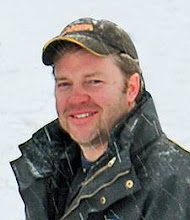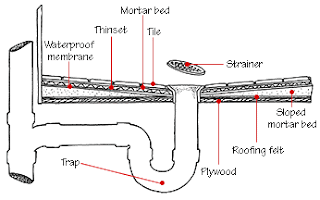Thanks to Martin for asking this question.
| A septic system is a highly efficient, self-contained, underground wastewater treatment system. Because septic systems treat and dispose of household wastewater onsite, they are often more economical than centralized sewer systems in rural areas where lot sizes are larger and houses are spaced widely apart. Septic systems are also simple in design, which make them generally less expensive to install and maintain. And by using natural processes to treat the wastewater onsite, usually in a homeowner's backyard, septic systems don't require the installation of miles of sewer lines, making them less disruptive to the environment. | |
| A septic system consists of two main; a septic tank and a drainfield. The septic tank is a watertight box, usually made of concrete or fiberglass, with an inlet and outlet pipe. Wastewater flows from the home to the septic tank through the sewer pipe. The septic tank treats the wastewater naturally by holding it in the tank long enough for solids and liquids to separate. The wastewater forms three layers inside the tank. Solids lighter than water (such as greases and oils) float to the top forming a layer of scum. Solids heavier than water settle at the bottom of the tank forming a layer of sludge. This leaves a middle layer of partially clarified wastewater. The layers of sludge and scum remain in the septic tank where bacteria found naturally in the wastewater work to break the solids down. The sludge and scum that cannot be broken down are retained in the tank until the tank is pumped. The layer of clarified liquid flows from the septic tank to the drainfield or to a distribution device, which helps to uniformly distribute the wastewater in the drainfield. A standard drainfield (also known as a leaching field, disposal field, or a soil absorption system) is a series of trenches or a bed lined with gravel or course sand and buried one to three feet below the ground surface. Perforated pipes or drain tiles run through the trenches to distribute the wastewater. The drainfield treats the wastewater by allowing it to slowly trickle from the pipes out into the gravel and down through the soil. The gravel and soil act as biological filters. | |
The use of septic fields goes back a hundred years or so. The first ones were very simple holding containers that would eventually leach into the ground. I even saw a septic tank made out of an old car (I wish I had pcitures of it). Anyway the tank and piping of a septic tank usually are not buired very deep. Typically between 18" to 36" for the pipe and 6' to 8' for the bottom of the tank.
As long as the tank is being used you should have no problems with the tank or lines freezing. The bacteria that break down the effluent (poo and other assorted materials) create quite a bit of heat which keeps everything toasty. I couple of rules to remember though.
1. Keep all traffic off the drain line from the house to septic, the septic tank and field. That includes foot traffic, horses, cars, anything with weight to it that can drive the frost further into the ground causing freeze ups.
2.Straws bales can be your best friend. Piling bales over the tank and building sewer can further insulate the lines and protect them.
3.Keep your field manicured (cut the grass). This helps aid the transfer of gases that the bacteria create to the atmosphere and will keep your field fit and operational.
Some Do Not's
1.Do not add anti-freeze, salt or a spetic additive to system.
2.Do not pump sewage to the surface.
3.Do not start a fire over the system to unthaw.
4.Do not run water continually to unfreeze.
A typically system looks something like this.
Some of the restrictions for installing a septic fields are outlined here.









